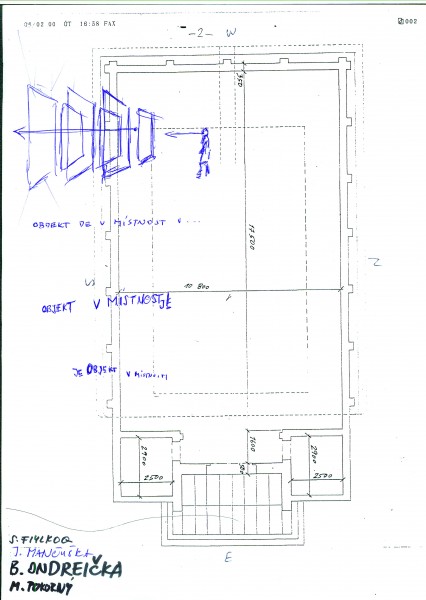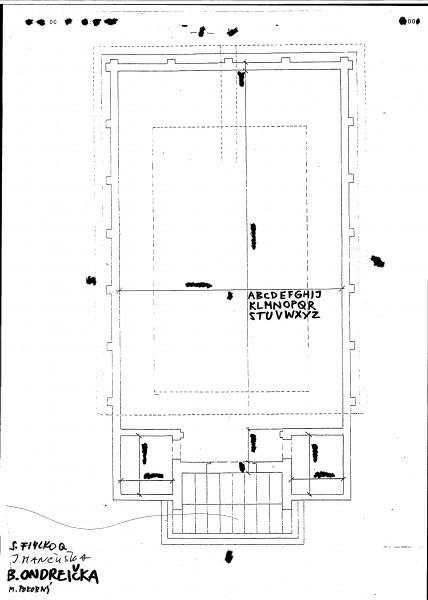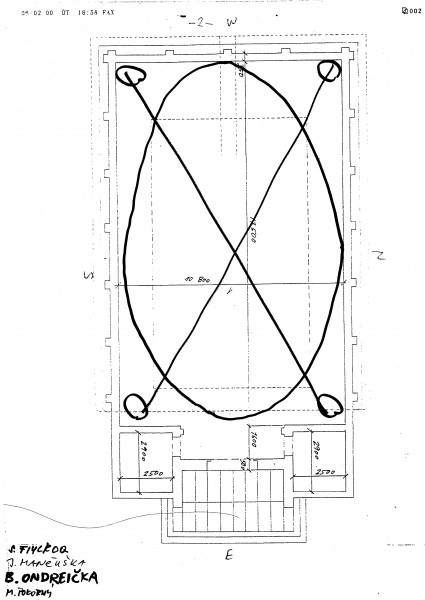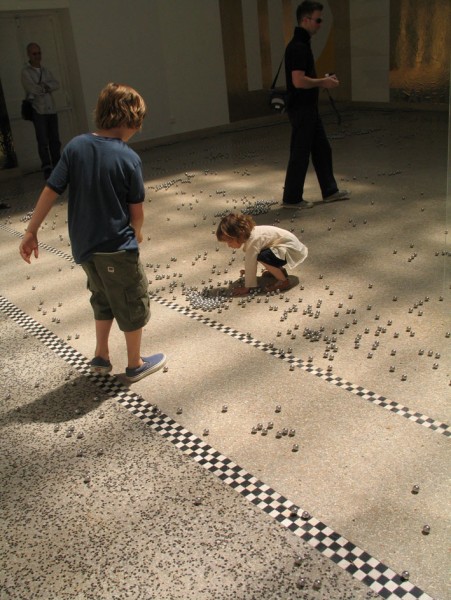The Model of the World / Quadrophonia
The Czech and Slovak Republics were represented at the 51st Venice Biennale by a joint curatorial project, The Model of the World / Quadrophonia. This project was developed by a group of artists and an art theoretician: Stano Filko (one of the most distinctive and original figures of the Slovak art of the latter part of the 20th century), Boris Ondreička (the winner of the annual SCCA – Bratislava Prize, 1996), Jan Mančuška (this year’s winner of the Jindřich Chalupecký Prize) and Marek Pokorný (the director of the Moravian Gallery in Brno), the curator of the project.
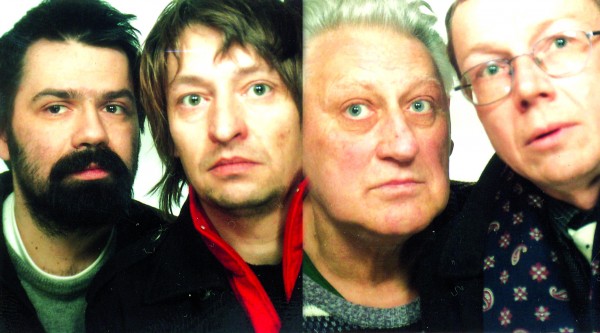 Archive SNGStano Filko, Ján Mančuška, Boris Ondreička, Marek Pokorný2005Authors of project The Model of the World / Quadrophonia
Archive SNGStano Filko, Ján Mančuška, Boris Ondreička, Marek Pokorný2005Authors of project The Model of the World / Quadrophonia
The Model of the World/ Quadrophonia
Marek Pokorný
We do not conceive of the model as an “image of the world” which can be red in different directions without falling apart as a whole. Nor do we conceive of it as a “scheme” which can only be apprehended statically or through linear reading, and if so, only within clearly defined propositions. The model has a holistic nature. The positions of its different elements cannot be changed arbitrarily. As such, the model is more complex than the scheme (not being reductive), yet it lacks the polyvalence intrinsic to a picture where it is the viewer to have the final say. The model sets down a point of view, a position or an approach to be adopted by the viewer, even though the viewer’s involvement is not restricted or overdefined as far as the functional aspect is concerned. The model conveys the world as a whole, not just separate pieces of information like in the case of a scheme or a formula. The model is intransferrable. It is determined by the time of its creation and the place of its execution. At another time and another place, it would have to be created anew and would assume a different form, even though its meaning would remain unchanged. The model is not reality, the model is not the whole world, but rather a condensed and controlled analogy of both.
The world forms a continuum in spite of being continuously decomposed and recomposed. The process of composition and the process of decomposition form a unity without which the world would not be apprehendable and habitable. If every thing can be a fascinating starting point for philosophical thought, a theme for an image, a useful object, a source of meditation, a representation of the cosmos, a memory trigger, a musical instrument, a future archaeological discovery, a cipher of destiny, an intersection of functional relationships in post-industrial society, or even a waste or an obstacle, then we are, at any time, in the centre of reality as a whole. Anything in it takes us “back” to material and physical prerequisites for the existence of the world, and even “further” towards the “mystical” interconnection between diverse time-space layers, as well as, introspectively, “inside”, towards the uniqueness of every man.
The perspectives from which we view and in which we “handle” objects, meanings and the world as an assumed whole of wholes are mutually permeated, interconnected and inapprehensible at the same time. Rather than emerging one after another, the layers of reality appear, in fact, simultaneously and are in permanent motion, preventing us from discerning and – often out of necessity – even defining the borders between them. Definable layers of the reality are a mere aid to our perceptive and social system: they are treacherous and yet indispensable mental mirrors of the world.
We tend to take on a safety net of meanings and purposes. The purpose of art is to either break the net, set it up anew for each particular case or project it into infinity while it is being woven. Meanings represent a convention shaken by every single use of analytical and critical tools. The world is being composed and decomposed at the same time. Our model of the world is this kind of permanent manifestation of the world in continuous composition and decomposition. It is a utopian/inconceivable attempt at putting an infinite quantity of actions, meanings and possibilities into apprehensible relations.
The members of the project team relinquished temporarily their identities without being deprived – as they believe – of their personal creative search and experience. Individual systems are interconnected in our model of the world to show the common elements which permeate the thought of different generations. Each of the team members has thus had an equal share in the process of creating an up-to-date model of the world valid in the framework of the project, which only comes into being as a result of interaction – of mutual agreement and disagreement.
January 2005 - Berlin, Bratislava, Brno, Prague, Vilnius
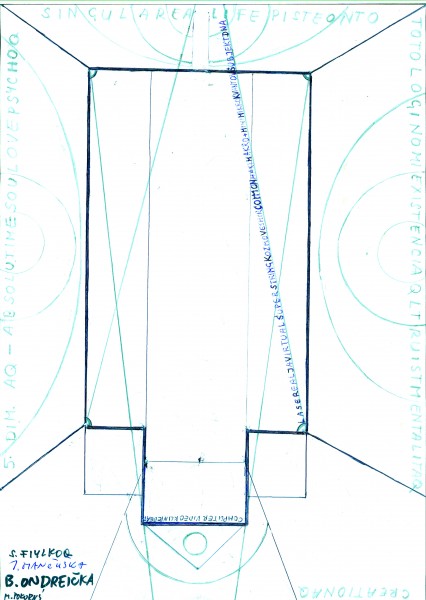 Stano Filko, Ján Mančuška, Boris Ondreička, Marek Pokorný
Stano Filko, Ján Mančuška, Boris Ondreička, Marek Pokorný